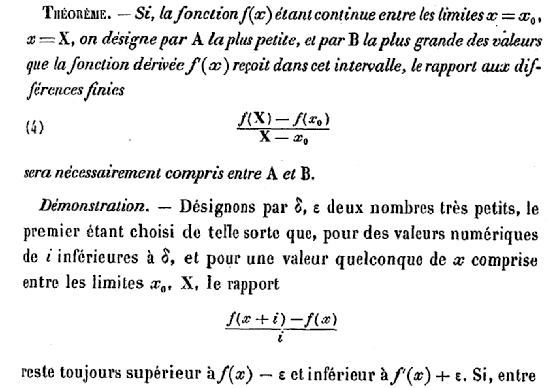My understanding (from a talk by Rob Bradley) is that Cauchy is responsible for the now-standard $\varepsilon$ - $\delta$ formulation of calculus, introduced in his 1821 Cours d’analyse. Although perhaps instead it was introduced by Bolzano a few years earlier. My question is not about who was first with this notation, but rather:
Why were the symbols $\varepsilon$ and $\delta$ used?
Why not, say, $\alpha$ and $\beta$? (Imagine how different our mathematical discourse would be...) Are there appropriate (French) words beginning with 'e' and/or 'd' that determined the choice? Or perhaps Cauchy used up $\alpha,\beta,\gamma$ for other purposes prior to introducing $\delta,\varepsilon$? Does anyone know?


